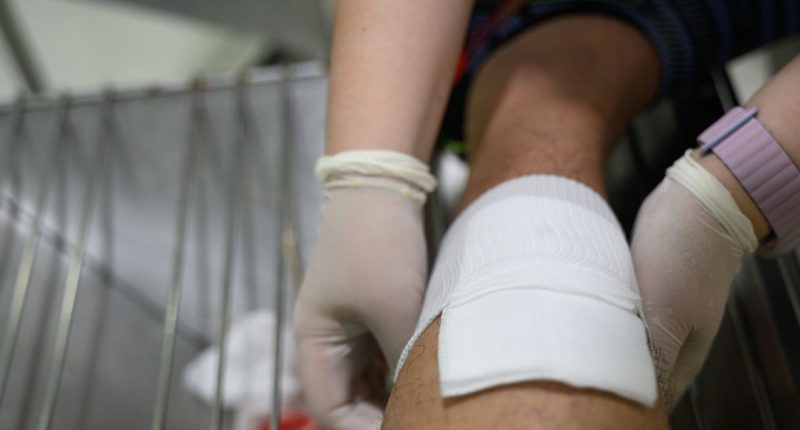A wound dressing which is activated by an ionised gas has been found to be an effective treatment for severe wounds without the need for antibiotics.
The process sees the plasma activation of hydrogel dressings – which are routinely used to dress wounds – alongside a mix of oxidants that decontaminate and help to heal chronic wounds.
The technique has been described as having “massive potential” for the medical world and the treatment of wounds.
In the face of growing resistance to antibiotics, there is an urgent need to find new ways address the “silent pandemic” of chronic wound infections.
- Electricity can help wounds heal 3 times quicker
- Healing agent found in fetuses could be used to treat diabetic wounds
- Foot wounds and infections
This latest innovation has been 10 years in the making and has potential to transform the treatment of diabetic foot ulcers, which can very often lead to amputation.
Researchers from the University of Sheffield and University of South Australia led the study.
Co-author Professor Rob Short, Professor of Chemistry at the University of Sheffield, said: “More than 540 million people are living with diabetes worldwide, of which 30 per cent will develop a foot ulcer during their lifetime. This is a neglected global pandemic which is set to increase further in the coming years due to a rise in obesity and lack of exercise.
“In England alone between 60,000 and 75,000 people are being treated for diabetic foot ulcers per week. Infection is one of the major risks. Increasingly, many infections do not respond to normal antibiotic treatment due to resistant bacteria which results in 7,000 amputations per year.
“There is an urgent need for innovation in wound management and treatment and it is a real privilege to be part of the international team who have been working on this alternative treatment for over 10 years.”
Using cold plasma ionised gas to control infection and aid healing has also been proven to be effective in trials. This is down to the powerful chemical mix of oxidants, in particular the reactive oxygen and nitrogen species (RONS) that is produced when it combines and activates the oxygen and nitrogen molecules in the ambient air.
Using RONS in plasma activating hydrogel dressings increases the power of the gel and eradicates bacteria, the team said.
The focus of the study was the treatment of diabetic foot ulcers, but the dressing technique could be used to treat other wounds, including internal infections.
Study lead Dr Endre Szili, from the University of South Australia, said: “Antibiotics and silver dressings are commonly used to treat chronic wounds, but both have drawbacks.
- Podiatry researchers awarded almost £300,000 for innovative foot ulcer trial
- Diabetic wounds heal 3 times faster with use of innovative magnetic gel
- Defining junk food for tax purposes could encourage healthy food innovation
“Growing resistance to antibiotics is a global challenge and there are also major concerns over silver-induced toxicity. In Europe, silver dressings are being phased out for this reason.
“Chronic wound infections are a silent pandemic threatening to become a global healthcare crisis. It is imperative that we find alternative treatments to antibiotics and silver dressings because when these treatments don’t work, amputations often occur.”
Dr Szili said the active ingredients could be delivered over a lengthy period, improving treatment, with a better chance of penetrating a tumour.
He added: “Plasma has massive potential in the medical world, and this is just the tip of the iceberg.”
Read the full study in Advanced Functional Materials.





